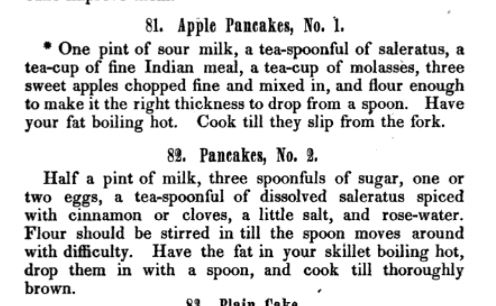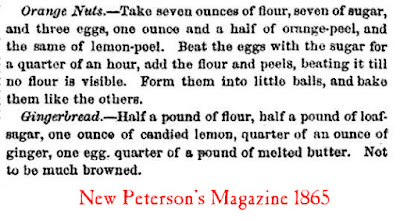The Etiquette of Courtship. —It is useless here to attempt any supervision or dictation on "choice" and "selection;" and we can only say that careful but delicate and private inquiry must be mutually made, and an introduction obtained either through some mutual friend, and a relative— as brother, father, or uncle—of the lady. On no account should the introduction be obtained in any other way. There are hundreds of proper and acknowledged means of bringing young people together,—as balls, parties, picnics, &c.—without resorting to any violent or presumptuous methods.
Domesticated habits personal neatness, a sound knowledge of cookery and the other domestic arts, and good taste are above all the merely ornamental accomplishments.
And, as to the conduct of one towards the other, let the young man be sincere, gentle, and considerate, and the girl confiding, single-hearted, kind, and discreet; and their own hearts will tell them better than any set forms or rules how to please and to be just to each other. Let neither be over-warm nor over-cold; let the lady respond to the gentleman's advances, and do no more; and let mutual confidence grow with mutual esteem and love, till the time comes when the man feels he may with some confidence plead his cause with the fair enslaver.
It has been well said that an offer of marriage is the highest and purest compliment a man can pay to a woman; and, therefore, it should be treated with the greatest consideration.
When a proposal is made which cannot, from any real and sufficient reason, be accepted, let the refusal be gentle but firm, and if there be any real bar—as a prior engagement—let it be said delicately, but at the same time unmistakably. Where the cause of the refusal is simply on the account of "lack of love," no definite reason need be given, but the refusal must still be most courteous and gentle. And here a word to the ladies:—More lives have been wasted, more misery and heart-ache caused, more desperately foolish resolves made, and projects carried out, through light and causeless refusals than from all the ill-assorted marriages in the world. It is a woman's duty, when an offer of marriage is made to her, to take all the circumstances of the case into earnest consideration; to weigh every tittle of evidence for and against her lover; to remember that his happiness is doubtless resting on her reply; that of all women he has chosen her; and then, if she feel herself forced to refuse, let her be brief, be candid, be firm, be compassionate.
If she can accept, let her allow no false modesty stay her lips, but, with all delicacy and candour, avow her preference.
Remember—
"True love’s the gift which God has given
To man alone beneath the heaven.
It la the secret sympathy.
The silver link, the silken tie,
Which heart to heart, and mind to mind.
In body and in soul can bind."
No man should content himself with simply an avowal of love, but he should distinctly and in terms oiler; marriage; he may be as eloquent as he pleases, but there must be no possible doubt or misinterpretation of his meaning. A model proposal was that of Verdant Green:—"Patty — my dear Miss Honeywood—I love you I Do you love me?" followed directly by a confidential and loving talk of marriage and future arrangements.
Long engagements are most undesirable, as oftentimes the lady gets weary of the monotonous dullness of her life, shut out, as she must be, from a great deal of the amusement in which her sisters and friends indulge. She is like a picture in a gallery with the ominous word "Sold" upon it; people admire it with a sort of envious restraint, thinking all the time the purchaser had better take it away to grace his own home.
When an engagement has fairly commenced, the gentleman should, by every means in his power—avoiding fussiness and conspicuous attention— endeavour to strengthen in the lady's heart the love and respect for him which caused her to accept his proffered hand. He should let every one see, by his manly and chivalry deference to her lightest wish or inclination, their relative positions; and, at the same time, avoid all appearance of "possession," or of monopolizing her time or thoughts. No woman likes to seem constrained to devote all her attention to her lover, no matter how much she really cares for him. Jet there, however, be no neglect, no broken appointments, no unpunctuality, no paltry excuses: remember that, whatever is apparent, an engaged girl is constantly thinking of her future. And it is natural she should do so, for, notwithstanding all that is said o£ "woman's rights," her position in life is clear and evident; and what higher honour is possible in this world than to be man's helper, to whom he turns at every trouble, whose smile is his best reward, whose kiss his greatest incentive? What brighter prospect is possible than to possess the power to win over by a kind word, and to establish a man wavering between right and wrong?
It is the gentleman's prerogative to urge on the time for the marriage, but to the lady exclusively belongs the right of fixing the exact day. This important point being settled, the domestic arrangements as to the future home of the young couple, &e., are made; and it is usual for the lady's mother to provide the table-linen, house-linen, &e., and the future husband the house and its furniture.
Choice of a Husband.—As few ladies are privileged to initiate proposals in reference to spouses, directions may only be given with respect to the acceptance of offers. Do not encourage the advances of a gentleman who is believed to have jilted a lady; yon owe this to your sex and to society. Never believe any one whose protestations of love are intense at first sight; you may better judge the sentiments of the man who loves you by his manner than by his words. Should a gentleman select you for attentions in preference to others, you are justified in recognizing his kindly disposition; with a little encouragement he is likely to become your lover. Do not coldly reject the advances of any respectable person who honours you with his proposals; the timid suitor may prove a most worthy one, and anyhow you owe an acknowledgment of courtesy to all who indicate towards you respect, or friendship, or affection. Your good sense will teach you to prevent any one whom you do not intend to marry prosecuting his advances so far as to necessitate your giving him a repulse. If a handsome present is sent you by a gentleman whom you cannot accept as a lover, return it at once, with a frank expression of your appreciation, accompanied by a regret that you cannot retain so valuable a gift. In general you may look with favour on those gentlemen whom your papa invites frequently to his table, and mamma rejoices to introduce to her evening parties. If a suitor is known to be intemperate, or is understood to be fast in his habits, reject his offers, and on no account lie entrapped by his professions of reformation. He is not a hopeful lover whose tastes even verge on dissipation. His habits may improve, but do not stake your happiness upon the chance. Do not despise a lover because he is poor,~ but if he is poor and lacks application, he will not suit you as a husband. "I propose to marry your daughter," said a young medical practitioner to a citizen who had amassed a fortune by industry. "Marry my daughter, sir? What have you got to keep her with?" "My lancet only," said the young physician, "but I mean to use it." "You shall have her," said the father, struck by the young man's expression of decision.
Let our young lady readers attend to these parting hints.
1. Let your accepted lover be some years your senior ; you will respect him all the more hereafter.
2. Do not marry a vulgar rich man; he will not elevate you much in the social world, and any little advantage in this way will be more than negatived by your having to endure manners which are unpleasant to you.
3. Break off an engagement with a suitor who proves of fitful humours— cheerful to-day, and moody or morose to-morrow. How could you spend a lifetime with one of moods so variable! These are too often premonitory of chronic ailment, some disease of the brain.
Choice of a Wife.—
Marriage is the most important step in life. An imprudent union is the cause of lifelong misery, while a judicious alliance is the greatest of temporal blessings. He who marries rashly is a fool. Early marriages are to be recommended where the parents of both parties are satisfied, where there are proper means of support, and where the young lady is of prudent and economical habits. As a rule, a man under twenty-one should not venture upon matrimony, and no time has been lost should he not marry till thirty. In choosing a wife, every man should be guided by such counsels as these:
1. Remark the lady's temper. No extent of accomplishments will compensate for the lack of amiability. A lady who answers her mother petulantly will prove a thorn in her husband's pillow. If she quarrels with her companions at school, she will certainly scold her servants and vex her children. If she is susceptible of slights before marriage she will after it be liable to jealous humours and other unpleasant freaks.
2. Beware of flirts. A girl who bids for admiration, and has smiles for every one, should be met upon her own terms. Marriage with the heartless is not to be thought of.
3. Never dream of marriage with one of extravagant habits. A clergyman bent on marriage dined with a friend who possessed three marriageable daughters. Before dinner he had been at a loss as to which of the young ladies he should propose to. Towards the close of the meal cheese was produced, and each of the three sisters took a portion. Before eating, the first pared her morsel, the second scraped hers, and the third took the cheese just as it was. The visitor was no longer at a loss: he proposed to the lady who, cleanly without being extravagant, scraped her cheese. Let every suitor carefully remark as to his admired one's views concerning domestic expenses and personal attire ; if in the parental home she is heedless of outlay, he may be satisfied that her profusion will be boundless when she is admitted into her own.
4. The lady who exhibits sordid inclinations is unsuitable as a wife; she would introduce meanness at your family hearth, and your friends would not invite her to their homes. If the object of your affections has a wise father and a discreet mother, you may make your proposals with full confidence that, should your suit prevail, your future partner will be "a crown to her husband."




























